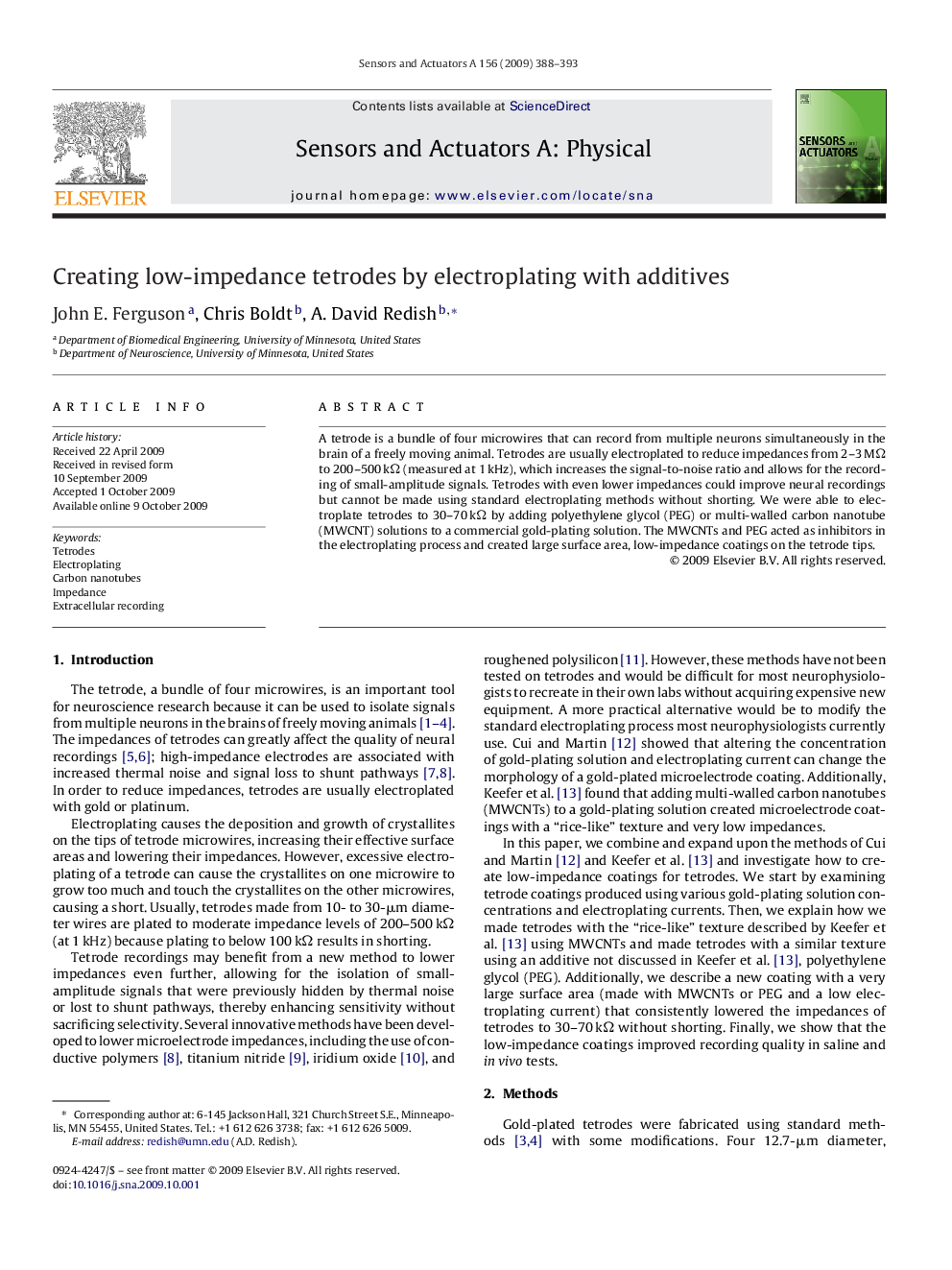| Article ID | Journal | Published Year | Pages | File Type |
|---|---|---|---|---|
| 736731 | Sensors and Actuators A: Physical | 2009 | 6 Pages |
A tetrode is a bundle of four microwires that can record from multiple neurons simultaneously in the brain of a freely moving animal. Tetrodes are usually electroplated to reduce impedances from 2–3 MΩ to 200–500 kΩ (measured at 1 kHz), which increases the signal-to-noise ratio and allows for the recording of small-amplitude signals. Tetrodes with even lower impedances could improve neural recordings but cannot be made using standard electroplating methods without shorting. We were able to electroplate tetrodes to 30–70 kΩ by adding polyethylene glycol (PEG) or multi-walled carbon nanotube (MWCNT) solutions to a commercial gold-plating solution. The MWCNTs and PEG acted as inhibitors in the electroplating process and created large surface area, low-impedance coatings on the tetrode tips.
